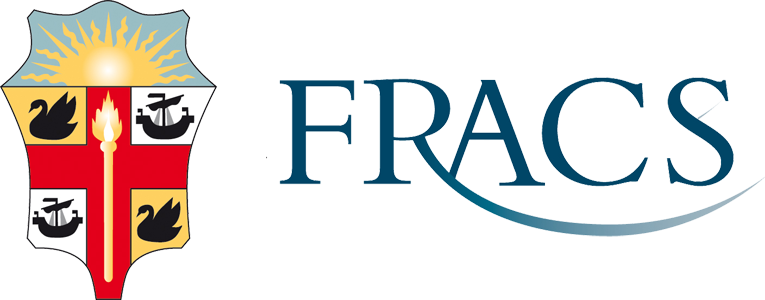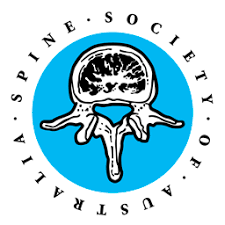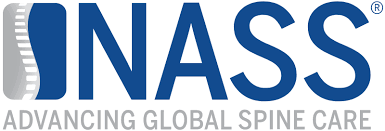Ulnar Nerve Decompression
What is Ulnar Nerve Decompression?
Compression of the ulnar nerve occurs when the nerve is compressed along its course as it runs down the inside of the arm around the elbow to the inside of the forearm.
The ulnar nerve is very important in supplying sensation to the inside part of the hand. Usually, the little finger and ring finger and strength to the small muscles of the hand. The nerve is usually compressed above, at and below the elbow. Other causes of compression include trauma to the elbow region, repetitive injury to the nerve with the elbow bent, and hormone disorders such as acromegaly and diabetes.
Compression of the ulnar nerve causes numbness in the little and ring finger and weakness of the small muscles of the hand and fingers. The symptoms are usually worse with activity, especially bending the elbow.
Who is Suitable for Ulnar Nerve Decompression?
An operation to decompress the nerve is recommended when the numbness and pain affecting the inside of the forearm, little and ring fingers is worsening. In addition, it is very important to operate early, before any damage is done to the nerve causing permanent weakness and wasting of the small muscles of the hand.
Suppose any weakness or wasting of the small hand muscles is present before the operation. In that case, this may not always return to normal, despite having the operation to release the pressure on the nerve.
Ulnar Compression Diagnosis
The diagnosis of ulnar compression is confirmed with special electrophysiological tests on the nerves supplying your arm.
These are called nerve conduction studies. When an electrical signal is sent down the nerve, the electrical impulse is dampened and delayed as it crosses above and below the elbow when nerve compression is present.
Nerve conduction studies performed by a specialist neurologist will confirm the diagnosis. The neurologist will inform the neurosurgeon of your test result.
Benefits of Ulnar Nerve Decompression
Ulnar Nerve Decompression can provide several benefits:
- Relieves Pressure: Moving the ulnar nerve to a less confined area helps alleviate pressure and irritation.
- Reduces Symptoms: After surgery, many patients experience significantly reduced numbness, tingling, and pain.
- Improves Function: The procedure can help restore strength and coordination in the hand and fingers, allowing patients to return to normal activities.
- Successful Outcomes: Many patients achieve good long-term outcomes from the surgery with appropriate post-operative care and rehabilitation.
Types of Ulnar Nerve Decompression
- Simple Decompression: This is the least invasive ulnar nerve decompression surgery type. The surgeon makes a small incision and simply cuts the ligament that forms the top of the cubital tunnel, thereby reducing pressure on the ulnar nerve.
- Ulnar Nerve Transposition: This procedure is performed when simple decompression is insufficient, or the nerve is unstable. The nerve is moved (or "transposed") from the cubital tunnel to a new location where it is less likely to be compressed. This can be done in three ways:
- Subcutaneous transposition: The nerve is relocated to a place under the skin.
- Intramuscular transposition: The nerve is placed within the muscles.
- Submuscular transposition: The nerve is relocated beneath the muscles.
- Medial Epicondylectomy involves removing part of the medial epicondyle (the bony bump inside your elbow). This opens up more space for the nerve and prevents it from getting caught on the bump when the elbow is bent.
Alternative Options to Ulnar Nerve Decompression
Before considering Ulnar Nerve Decompression, it is advisable to explore conservative treatment options. These alternatives aim to alleviate symptoms and improve the condition without surgery. Here are some non-surgical options to consider:
- Rest and Activity Modification
- Immobilisation
- Hand Therapy
- Non-steroidal anti-inflammatory drugs (NSAIDs)
- Ergonomic Modifications
- Nerve Gliding Exercises
If conservative treatments do not provide sufficient relief or the nerve compression is severe, your doctor may recommend Ulnar Nerve Decompression as a surgical option.
What to Do Before Ulnar Nerve Decompression?
Tell Mr Malham about any medical conditions or previous operations. Suppose you have a medical condition such as diabetes, heart problems, high blood pressure or asthma. In that case, Mr Malham may arrange for a specialist physician to see you for a pre-operative assessment and medical care following the neurosurgery.
Inform Mr Malham of the medication you are taking and/or have allergies to medications. You must stop using the following 10 days pre-operatively:
- Aspirin
- Plavix
- Isocover
- Asasantin
You must stop using blood thinning medication (such as Warfarin) 3-5 days pre-operatively.
Ulnar Nerve Decompression Procedure
During an ulnar nerve release and transposition procedure, the following steps are typically involved:
- Anaesthesia: You will be given anaesthesia to ensure you are comfortable and pain-free during the surgery. The type of anaesthesia used can vary, ranging from local anaesthesia (numbing the specific area) to general anaesthesia (rendering you unconscious).
- Incision: The surgeon will make an incision over the inner side of the elbow, exposing the ulnar nerve and surrounding tissues.
- Nerve Release: The surgeon will carefully identify and release any structures or tissues compressing or putting pressure on the ulnar nerve. This can involve removing scar tissue, releasing tight bands of tissue, or removing a portion of the medial epicondyle (medial epicondylectomy) to create more space for the nerve.
- Nerve Transposition: If deemed necessary, the ulnar nerve will be repositioned to a new location towards the front of the elbow to prevent further compression or irritation. This can involve subcutaneous transposition (moving the nerve under the skin), subfascial transposition (moving the nerve under a sling made from the lining of muscle) or submuscular transposition (moving the nerve beneath the forearm muscles).
- Fixation: Once the nerve is transposed, the surgeon may secure it in its new position to prevent it from returning to its original location.
- Closure: The incision is closed using sutures, and a sterile dressing is applied.
What to Expect After an Ulnar Nerve Decompression?
After the Ulnar Nerve Decompression surgery, you will be monitored in a recovery room, where you will be monitored until the effects of anaesthesia wear off if you had a general anaesthetic. Pain medication will be administered to manage post-operative pain.
Ulnar Nerve Decompression Recovery Plan
Early Post-Operative Period (First Few Days to Weeks):
- You will be given specific instructions regarding wound care, such as keeping the incision site clean and dry.
- Hand therapy will be initiated early to promote range of motion, prevent stiffness, and maintain muscle strength in the affected arm and hand.
- You may be advised to avoid activities that stress the elbow, such as heavy lifting or repetitive motions.
- Regular follow-up appointments with your surgeon and hand therapist will be scheduled to monitor progress, assess wound healing, and make necessary adjustments to your recovery plan.
- Rehabilitation and Recovery (Weeks to Months):
- Hand therapy will play a crucial role in your recovery. Your therapist will guide you through exercises and techniques to improve the affected arm's range of motion, strength and coordination.
- Gradual return to normal activities will be encouraged, but following your surgeon's and therapist’s instructions is important. Do not advance your exercises without appropriate guidance to avoid re-injury.
- Pain and swelling should gradually subside over time, although it is normal to experience some residual symptoms during the healing process.
- Follow-up appointments with your surgeon and hand therapist will continue to monitor progress and address any concerns.
Ulnar Nerve Decompression Prognosis
Most patients obtain relief and improvement in the numbness and weakness affecting the hands. However, suppose there is nerve damage already present, with marked numbness, weakness and wasting of the muscles before the operation. In that case, the result of the operation is to preserve the current hand function and feeling, and obtain some improvement.
Ulnar Nerve Decompression Risks
The total risk of ulnar nerve decompression is approximately 2 – 3% or 1: 33 / 1: 50.
These include:
- Infection, usually of the skin requiring treatment with oral antibiotics
- Post-operative bleeding requiring re-operation of the wound and drainage
- Damage to the ulnar nerve
- Failure of the weakness and numbness to improve following the surgery
- General medical complications of general anaesthetic and/or drug reactions
Delaying Ulnar Nerve Decompression
If Ulnar Nerve Decompression surgery is delayed, the symptoms associated with cubital tunnel syndrome may persist or worsen. Delaying surgery can lead to ongoing nerve compression, resulting in progressive nerve damage and increased symptoms such as pain, numbness, tingling, and weakness in the affected hand and fingers. If surgery is delayed for too long, the nerve and affected muscles will not recover, even if ulnar nerve decompression is performed.
Contact Us
Hours
Monday to Friday
9.00am – 5.00pm
*This may vary on occasions or the rooms may be briefly unattended.
All Rights Reserved | Greg Malham, Neurosurgeon, BSc MBChB DMed FRACS



